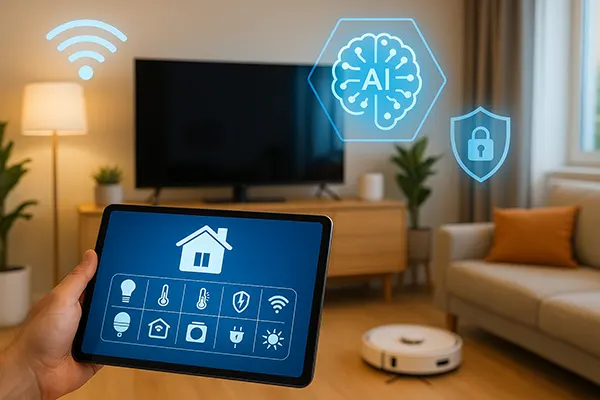
Quantum Internet: What the Network of the Future Will Look Like
The internet has shaped every aspect of modern society—but a new era is approaching. Quantum internet, based on the strange and powerful principles of quantum physics, promises to redefine how data is transmitted, secured, and processed. As of June 2025, significant strides have been made toward its real-world implementation. This article delves into what quantum internet is, what it means for the future, and what progress has already been achieved globally.
What Is Quantum Internet and How Does It Work?
Quantum internet refers to a global network that uses quantum signals rather than classical electromagnetic waves to transmit information. At its core lies quantum entanglement—a phenomenon where two or more particles become so deeply linked that the state of one instantly affects the other, no matter the distance between them.
Unlike classical internet protocols, which rely on binary code and can be intercepted or hacked, quantum networks exploit the principles of superposition and entanglement to enable ultra-secure communication. Quantum Key Distribution (QKD) is one such method, offering theoretically unbreakable encryption through the detection of any eavesdropping attempt.
At a technical level, quantum internet requires specialised infrastructure including quantum repeaters, entangled photon sources, and cryogenic hardware. These technologies are still in their infancy, but several pilot projects are already underway in Europe, China, and the United States.
Global Initiatives and Progress in 2025
As of June 2025, the EU’s Quantum Communication Infrastructure (EuroQCI) has successfully established a cross-border entanglement network between Austria and Italy, making it one of the most advanced operational prototypes globally. This initiative is part of a broader €1 billion EU plan to roll out quantum-secure communication across member states by 2030.
China remains a frontrunner, having launched the Micius satellite and conducted quantum communication between ground stations over 1,200 km apart. Meanwhile, the United States is focusing on terrestrial networks with initiatives like the Mid-Atlantic Quantum Internet Exchange, backed by institutions such as Fermilab and the University of Chicago.
Japan, South Korea, and Canada are also accelerating their quantum infrastructure development through both public and private partnerships. These efforts collectively signal a transition from theoretical promise to practical deployment.
Potential Applications and Transformative Impact
The implications of quantum internet extend far beyond secure messaging. In the realm of finance, quantum networks could revolutionise transaction validation and fraud prevention. With guaranteed data integrity, high-stakes industries like banking and insurance could be transformed.
Healthcare is another sector poised for disruption. Quantum internet could enable real-time transmission of sensitive genomic data between institutions without any risk of interception. This could accelerate medical research and the global sharing of life-saving data.
In science and academia, researchers would gain the ability to run distributed quantum experiments across continents, connecting quantum computers in different labs to function as a single entity. This opens the door to breakthroughs in physics, chemistry, and artificial intelligence.
Challenges to Widespread Adoption
Despite its potential, there are formidable challenges. One of the most significant is the fragility of quantum states. Quantum bits—or qubits—are extremely sensitive to environmental interference, requiring highly controlled environments to function.
Building quantum repeaters capable of maintaining entanglement over long distances is another hurdle. Unlike classical signals, quantum data cannot be copied or boosted without collapsing the state, making repeater design vastly more complex.
Furthermore, the cost of deploying cryogenic systems and photon detectors remains prohibitively high. Until economies of scale are achieved, quantum internet will likely remain confined to government and research applications.

Looking Ahead: Timeline and Global Collaboration
Experts predict that by the early 2030s, hybrid models integrating quantum and classical networks will become operational in key global cities. These “quantum islands” will serve as testbeds for broader implementation and interoperability testing.
In the meantime, international collaboration will be essential. Quantum internet cannot function in isolation; its effectiveness grows with the size and interconnectivity of the network. Alliances like the EU–US Quantum Cooperation Arrangement are setting the groundwork for a truly global system.
Policymakers are also beginning to address the ethical and legal dimensions of quantum communication. Draft regulations are being discussed to govern data sovereignty, export controls, and intellectual property protection in the quantum era.
Education and Workforce Development
To meet future demands, universities and technical institutes worldwide are ramping up quantum engineering programmes. In June 2025, the UK launched its National Quantum Skills Framework, aiming to train over 10,000 specialists by 2030.
Companies like IBM, Google, and Toshiba are partnering with academic institutions to offer internships and practical research opportunities in quantum networking. These collaborations help ensure a pipeline of talent prepared for the next wave of internet evolution.
Public awareness is also on the rise. Several online platforms now offer introductory courses in quantum mechanics and information theory, helping to demystify the science for broader audiences and inspire the next generation of innovators.



